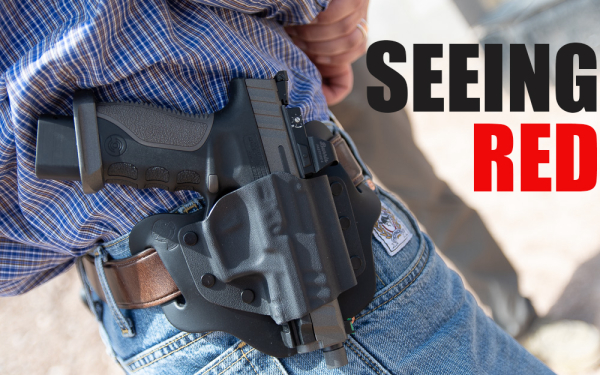
If we are in the midst of Gun Culture 2.0, we have also entered, perhaps more recently, into the Age of the Red Dot.
Sure, it’s not as catchy a turn of phase as Gun Culture 2.0 – I’m still waiting for Micheal Bane to word-shop that for me – but nonetheless we have entered the period within Gun Culture 2.0 where the red dot is more the standard than not.
Today, a company is more likely to introduce an optics ready pistol model from the start than relying on it as a line extension to be introduced later. That’s because customers seem to have been conditioned to expect that upgrade option as a standard feature on handguns.
And, of course, there are now a myriad of red dot brands, covering a wide range of pricing options, that make switching to a pistol mounted optic very easy. The industry is even finding its way, though slower than some would like, to a standardized list of mounting footprints.
Thanks to my less-than-perfect eyesight, I for one am here for this new Red Dot Age.
Fortunately, I got to spend all day Tuesday working on shooting a red dot, specifically the Burris FastFire 4 mounted atop the full size STR-9S Combat, during Stoeger’s media event at the Gunsite Academy.
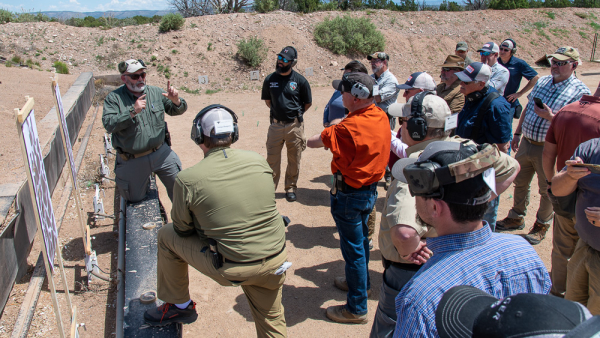
I had been looking forward to this day since the NRA Show when I got the opportunity to first handle the STR-9S Combat. Its ergonomics really appealed to me and I anticipated shooting it well.
After an admittedly rough start, I changed out the medium backstop for the large version (the STR-9S comes with three) and suddenly I was shooting a lot better.
Now, I’d like to tell you it was the result of my innate skills as a shooter and had nothing to do with the pistol, the red dot, the exceptional instruction from Gunsite’s Erick Gelhaus and his team, or any combination of those three. But I’m pretty sure nobody would buy that load of BS, which is a shame because I kinda wanted to take that victory lap.
Truth is, shooting a red dot isn’t anywhere near my wheelhouse. I have very limited experience with a red dot, and what experience I do have is mostly doing some kind of hand jive dot dance searching for the dot while my frustration grew exponentially.
I actually hated red dots because of this – and my complete lack of patience – and thus resisted the urge to move to a pistol mounted optic.
Age and eyesight are making the decision to transition to red dots for me. So, Tuesday’s introduction into red dot shooting was, honestly, fantastic. Somehow I figured out how to get, if not proficient, at least on the path towards proficiency.
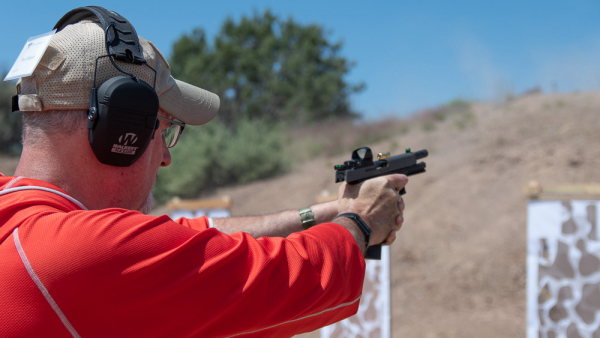
One of the most useful and red dot demystifying drills we did was when Erick had us aim the dot at a specific point on the target then rotate the optic around such that we had the dot in each corner of the optic’s window but still centered on the single point on the target,
The result was a grouping that showed how much range you have with the red dot in terms of positioning within the glass, assuming you handle the grip and trigger press mechanics appropriately.
When shooting this drill I expected some sort of buckshot style pattern as part of a ‘hey, let’s not do this’ lesson, but it was just the opposite. This drill shows you can get a solid grouping despite the dot not being centered in the window, and it’s a drill that I will certainly utilize going forward.
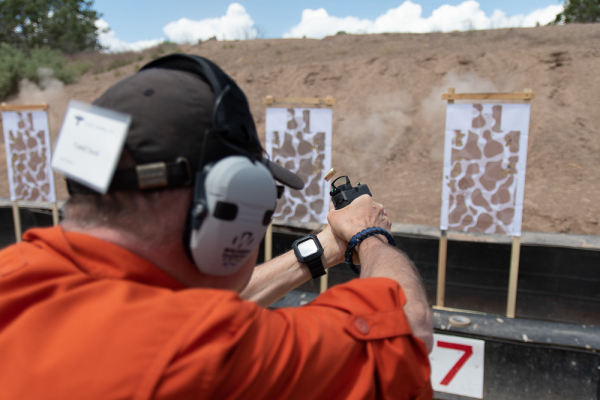
Like many of those in attendance, I learned a lot about how to shoot the red dot, and that was from just one day of really, really good instruction. Gunsite offers a five day course that goes in-depth on pistol mounted optics that can be incredibly valuable for those new to red dots, and especially those running a dot on their carry gun.
While perhaps mundane in terms of shooting excitement, I found the process of zeroing red dots to be incredibly useful. If I know little about using a red dot, I know even less about how to zero one, correctly. Not anymore.
Erick talked us through the subject of zeroing a red dot and the debate within training circles on what distances one should zero a dot. Proving that the ‘Gunsite Way’ isn’t the only way, Erick pointed out that the Sig Academy has done a lot of work on the subject and compiled the data to back up the position that 15 yards is the ideal distance for zeroing your red dot.
Everybody got the chance to work on zeroing, using a target that has 5 and 10 yard equivalency instructions, since not everybody has access to 15 yards, or a shooting bench. Since I was in a different relay than Jim Shepherd, I watched as he went through the process from 5 yards, shooting three shots off-hand, analyzing the grouping, adjusting the red dot as needed, and reshooting.

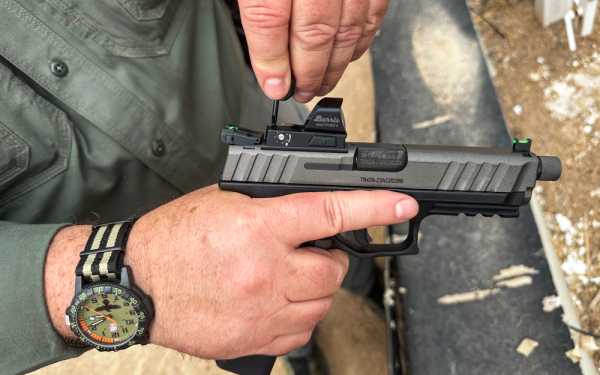
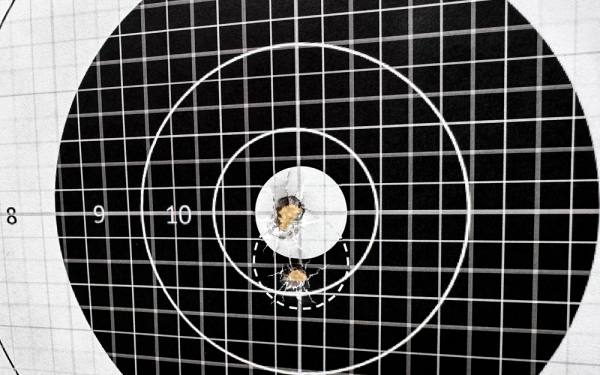
There are good days on the range, and there are great days on the range. For me, yesterday was close to a great day on the range. The Stoeger Combat shot as well as I expected it to. It felt solid in my hands and I was hitting what I was aiming at.
When it comes to aiming, Tuesday was the first time I was really comfortable, and confident, shooting a red dot. Sure, there is a lot more to learn and even more practice to be done, but damn I liked that setup.
The best part of Tuesday, and what made it great for me on a personal lever, was that I came off the range knowing more. Thanks very much, Erick, I am now a little less of a red dot idiot, and that’s a very good thing in my book.
– Paul Erhardt, Managing Editor, the Outdoor Wire Digital Network